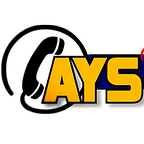Understanding Expanding by Dropping Your Branding
Earlier this year I posted a 3-part piece on Appnology. It was a concept where the industry working together could create an all-encompassing app to eliminate some specific rivals. The gist was simple. We are their backbone and what the industry giveth, this industry can taketh away.
The real meat and potatoes of the idea was that collective collaboration would allow us to do more with less by virtue of exponential growth.
Unlike the UBER model who wanted to monopolize mobility. Our alliance would allow us to make up for the driver shortage by reducing the quantity of drivers needed to service the market at hand. Among the other bonuses achieved is that all parties included will have higher miles to money revenue ratio than previous or typical for hire vehicle income due to a variety of overlaps and coverage options.
There are many other advantages by membership amongst the masses. Among the obvious are the economies of scale and an endless array of operational synergies. The choice and stable of vehicles are virtually endless. Seating capacity and colors are plentiful and, naturally, borders are nonexistent.
In effect, we would be attacking the driver shortage by trimming our need for drivers. Basically, don’t raise the bridge, lower the river.
One impediment to this program is vehicular branding. Firstly, I am not going to really rant and rave about this but especially in executive transportation. I have never been a fan of branding.
The bus industry, specifically pre pandemic, branding was required. The primary farmout need was only for large events, conventions and jobs of that nature. Today the farmout to in house ratio is at its highest level. Obviously, I do not have actual statistics to verify my claim but between the pre pandemic industry growth and quest to fulfill demand, I stand by my claim.
A few weeks ago, one of my bus companies had a 4-bus move and at the last moment they were informed one of the 4 had to be restroom equipped. They work with another operation we answer for, and they said they will provide It if they could cover that particular buses original order. They agreed. Company A swapped a $1200.00 order for 2-day $3200.00 order and everyone was whole.
Problem was the client previously used company A as their primary and company B as their secondary but were denied booking though them due to availability. Then matters get worse when the passengers leave the venue and march into the wrong bus by force of habit.
I learned along time ago the only thing worse than loading the wrong bus Is trying to unload it.
The driver shortage has also caused hundreds of quality buses to be parked and mothballed around the country. New energy efficient or hybrid models are choked with supply chain issues. And for the record, for every bus parked there are two equal commercial airliners in purgatory.
When I discuss this idea with people the natural response is that branding is critical for getting their name out there and it brings in business.
I would be lying if I said I never took a call from a motorist saying nice bus, I need a wedding quote. I have also taken calls from drivers impressed by what they see and ask if we are hiring. However, for every good call I get I get 3 matching calls with screaming irate motorists claiming, they were cut off. The driver is speeding, driving recklessly and so on.
Furthermore, if I may be frank, the collective industry can’t cover the existing demand so the marketing argument holds no water.
Lastly, I promise you. Any day, any month, any year now, the vehicular branding process will be scoreboard like electronics for numbers, images, and graphics. Wrapping will be wrapped up and private labeling will be the star of the show.
Now if you agree the concept is good medicine to nurse the ground transportation industry back to health. The question is what system do we use to replace it with.
My solution, partially borrowed by the airline industry is to essentially copy the tail number program with our own systemwide numbering ID system.
The system is simple to a fault. The first 2 letters indicate the vehicles home state. The middle numbers indicate the provider identification. This allows for 999 companies per state and naturally could be changed to 4 digits. The final three is the unit number for the specific company. This Illinois’s company code is 123 and this is their bus number 11.
This Arizona’s company code is 41 and this is car number 9.
A basic clearing house can administer and maintain, and it allows the industry step one in vertical integration industry wide.
Once the industry is created visually as one we will have interchangeable and logistical advantages unlike any entity. Growth and sub-contracting will be more flexible, and we will have become a solid force to be reckoned with.
